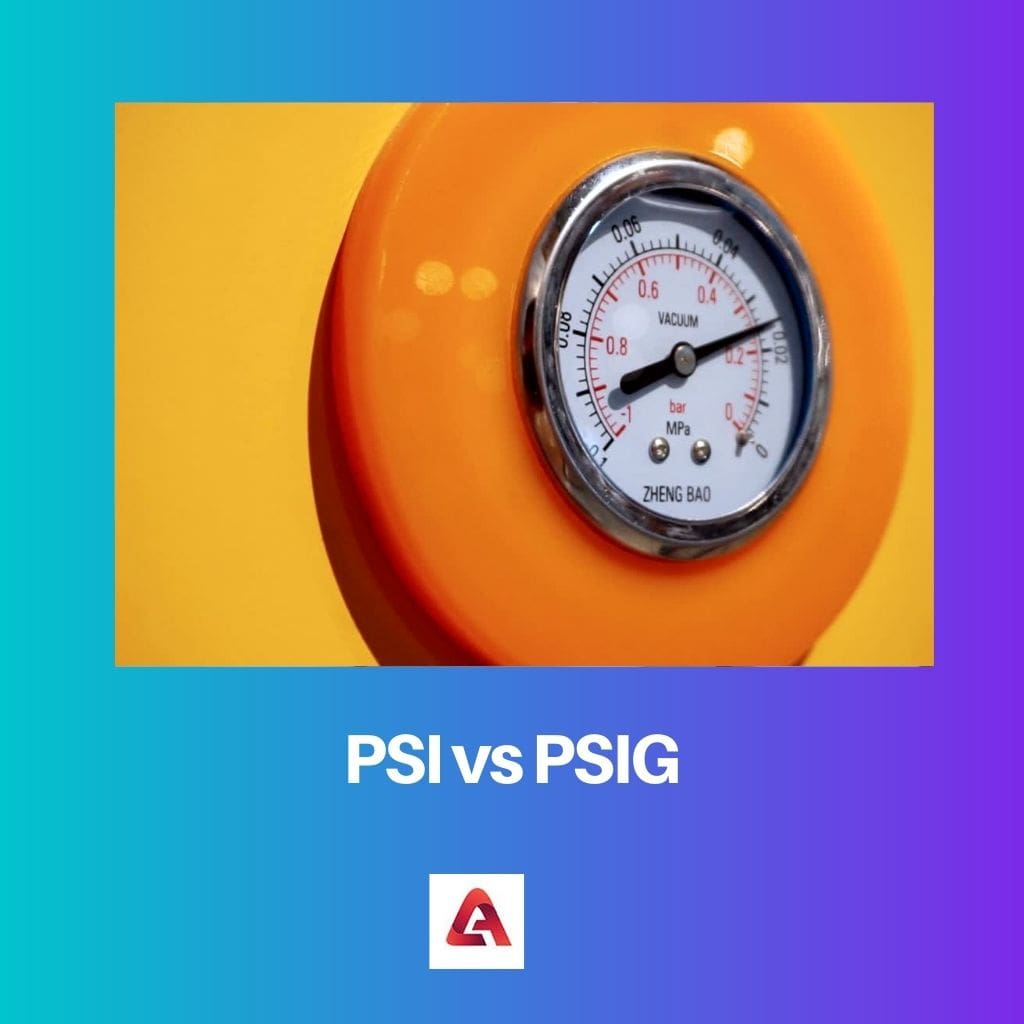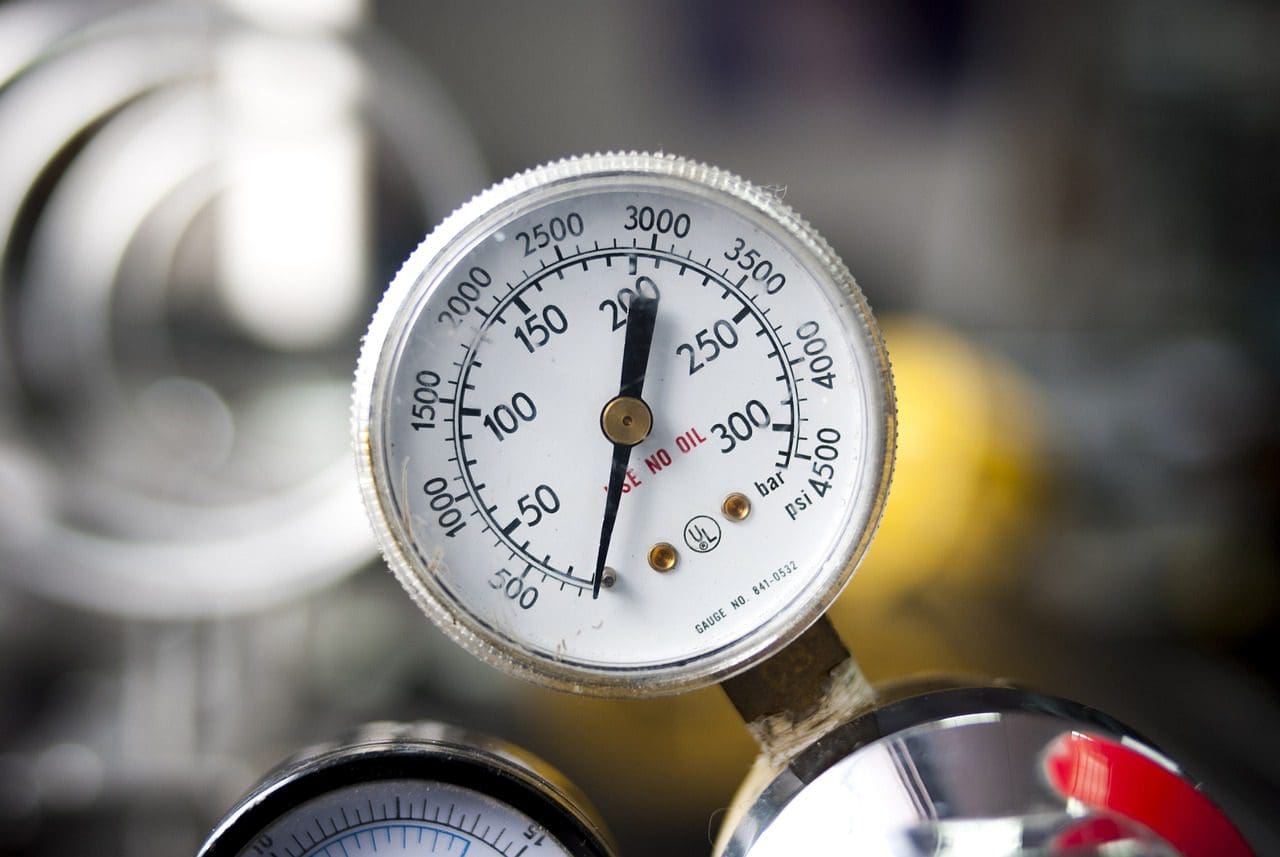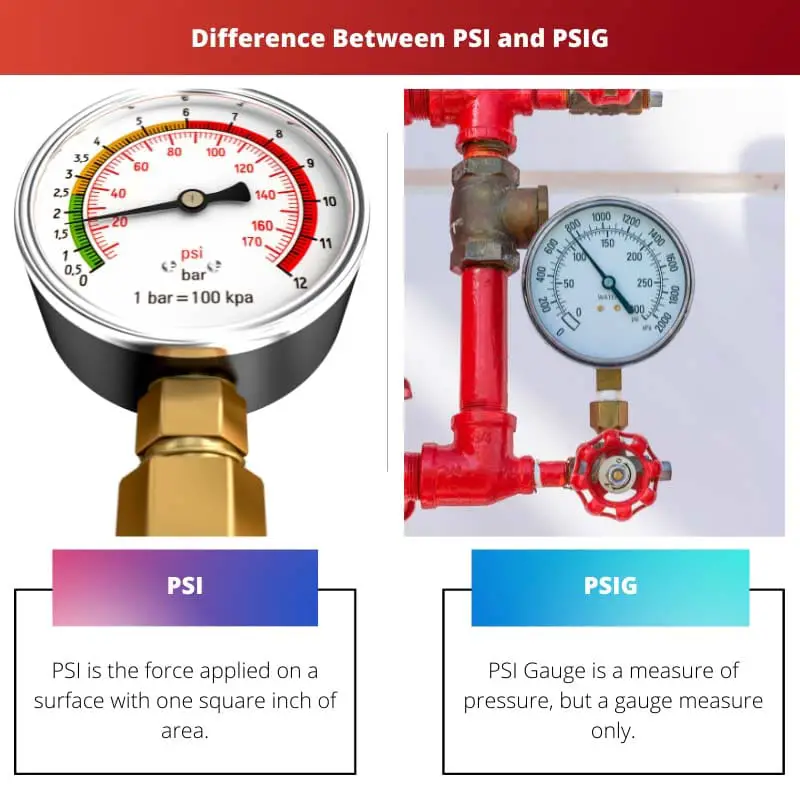No matter how the pressure is generated, it can be specified and measured in various ways, but it is mostly measured in PSI, i.e., Pounds per Square Inch. Pascal, equivalent to 0.01 millibars, is the S.I. unit of pressure.
The force per unit area is what pressure is defined as. The outcome of the force applied to an area is dependent on how the force is applied.
Pressure is also like temperature; it can be applied in either one or all directions. Let us take an example.
If one walks on the snow with snowshoes, he will not sink in for a long time. But if he walks shoeless on the snow, there are chances that he might sink in.
Why is it so? The force exerted on the snow is alike in both cases, with the shoes on or without the shoes; what differs here is the force per unit area.
When the person is wearing the snowshoes, the pressure on the surface becomes less because the force is spread out over a greater area.
Key Takeaways
- PSI (pounds per square inch) is a unit of pressure measurement, indicating the force exerted on an area of one square inch.
- PSIG (pounds per square inch gauge) refers to the pressure measured relative to atmospheric pressure, accounting for the local atmospheric pressure at the measurement location.
- PSI and PSIG are used to measure pressure, but PSI represents absolute pressure values, while PSIG adjusts for local atmospheric pressure to provide a relative measurement.
PSI vs PSIG
PSI is an acronym that stands for Pounds per Square inch and is the extra force put on a surface that has only one square inch of the area, and it’s used in fuel storage and tire pressure. PSIG stands for Pounds per Square Inch Gauge and it measures pressure but as a gauge measure.

Comparison Table
| Parameter of Comparison | PSI | PSIG |
|---|---|---|
| Full form | PSI stands for Pounds per Square Inch. | PSIG stands for Pounds per Square Inch Gauge. |
| Meaning | PSI is the force applied on a surface with one square inch of area. | PSI Gauge is a measure of pressure, but a gauge measure only. |
| Application | It is mostly used in wastewater management, fuel storage and distribution, tire pressure, etc. | It is mostly used in the refrigeration and air conditioning industry. |
| Calculation | PSI can be changed to various numbers of units that are used to measure pressure. | PSIG specifies that pressure is a measure relative to atmospheric pressure only. |
| Measure | It is a measure relative to a vacuum. | It is a measure relative to atmospheric pressure. |
What is PSI?
PSI is all about pressure measurement. It is the most used unit to measure pressure.
It stands for Pounds per Square Inch. It is the force applied on a surface with one square inch of the area and is a measure relative to a vacuum.
It is used mostly in the United States for industrial, commercial, and household equipment. Different units are used in other countries to measure pressure.
- 1 PSI is equivalent to 6,894.76 pascals. Pascal is a much smaller unit for measuring pressure.
- 1 PSI is equivalent to 51.7149 Torr, 2.03602 inHg, 0.0689476 Bar, 0.068046 atmospheres, 27.7076 inches of the water column, and so on.
PSIG and PSIA are the two variations of PSI that are used. PSI can be changed to various numbers of units that are used to measure pressure.
Application of Pounds per Square Inch is mostly used to measure industrial applications. For example, it is used in wastewater management, fuel storage and distribution, tire pressure, measurement activities, etc.

What is PSIG?
PSIG is a measure of pressure but a gauge measure only. It stands for Pounds per Square Inch Gauge.
PSIG specifies that pressure is a measure relative to atmospheric pressure only. The gauge pressure is put in when the atmospheric pressure is lesser than the pressure in the system, where atmospheric pressure is the pressure applied by the atmosphere’s weight.
A container with no air particles would be approximately -14.7 PSIG. 0 PSIG is always used to measure surrounding air pressure and does not consider the present barometric pressure.
It is because of this reason that the barometric pressure sensors are non-relative.
It would be pointless if a gauge sensor were used to estimate the barometric pressure. 32 PSIG is the suggested pressure for the car tires.
The temperature outside and the barometric pressure are other factors that can influence the inflation of the tires. Application of Pounds per Square Inch Gauge- It is mostly used in the refrigeration and air conditioning industry.
It is also used to disregard the results of the weather changes and the changing altitude and depth. Gauge pressure is also measured in many industrial applications, such as construction appliances, aeroplanes, trucks, and cars.

Main Differences Between PSI and PSIG
- PSI stands for Pounds per Square Inch, whereas PSIG stands for Pounds per Square Inch Gauge.
- PSI is a measure relative to a vacuum. On the other hand, PSIG is a measure relative to atmospheric pressure.
- PSI is the force applied on a surface with one square inch of the area, and PSI Gauge is a measure of pressure, but a gauge measure only.
- PSI is mostly used in wastewater management, fuel storage, tire pressure and distribution, and so on, while PSIG is mostly used in the refrigeration and air conditioning industry.
- PSI can be changed to various numbers of units that are used to measure pressure. PSIG specifies that pressure is a measure relative to atmospheric pressure only.

- https://www.tandfonline.com/doi/abs/10.1080/05698196808972238
- https://www.spiedigitallibrary.org/conference-proceedings-of-spie/9642/96420I/The-PSIG-procedure-to-Persistent-Scatterer-Interferometry-PSI-using-X/10.1117/12.2194984.short

This is an excellent breakdown of PSI and PSIG. It’s very enriching and I feel more knowledgeable about the topic after reading it.
I’m glad it has been enlightening for you, Patel. It’s definitely a topic that’s worth understanding properly.
I find the explanations of PSI and PSIG to be overly technical. A simpler approach might attract and benefit a wider audience.
Balancing simplicity with detailed information can be challenging, but I believe this article manages to find that balance well.
While I understand your point, Xrussell, simplifying the explanations too much might compromise the accuracy and value of the content.
The writer makes good use of examples to illustrate their points about pressure measurement and its applications in various fields.
Yes, the real-world examples make it easier to understand and apply the concepts. It’s a solid piece of writing.
I appreciate the detailed comparison of PSI and PSIG. The tabulated format makes it easy to grasp the differences and applications.
I couldn’t have put it better myself, Elliott. The comparison table is a handy and clear way of presenting the information.
I think the article effectively answers the ‘what’, ‘why’, and ‘how’ of PSI and PSIG. It’s quite comprehensive in its approach.
Right you are, Naomi. The comprehensive nature of the article makes it a valuable resource for anyone looking to understand these pressure measurements.
The tone of the article is a bit too formal and dry. Injecting a bit of humor here and there would make it more engaging and fun to read.
Agreed, Lucas, while some humor might be nice, the focus should be on maintaining the academic nature of the article.
I see your point, Lucas, but since this is a technical and educational piece, maintaining a formal tone is essential. It’s the nature of the content.
I think that it is a well-rounded explanation of what PSI and PSIG stand for and how it is used. I appreciate how the article also goes into depth about pressure measurement and units.
I totally agree with you, John. It is informative, accurate, and well-organized.
The article could sprinkle in some examples or case studies to further solidify the concepts discussed. Real-world applications always help.
You bring up a good point, Murphy. The inclusion of real-life instances where PSI and PSIG matter would take this article to another level.
The article is a bit too long and detailed. It could be more concise and to the point. It might lose readers’ interest.
Rose, it is necessary for such technical content to be comprehensive in order to fully educate readers. Plus, the depth of the content makes it more insightful.
The content provides a clear understanding of the differences between PSI and PSIG. I think it is an important topic to discuss and this article covers it well.
Yes, Jamie. Understanding these units is crucial in many industries and professions, and this article does a great job of explaining it.
I couldn’t agree more. It’s an informative piece with a lot of value.